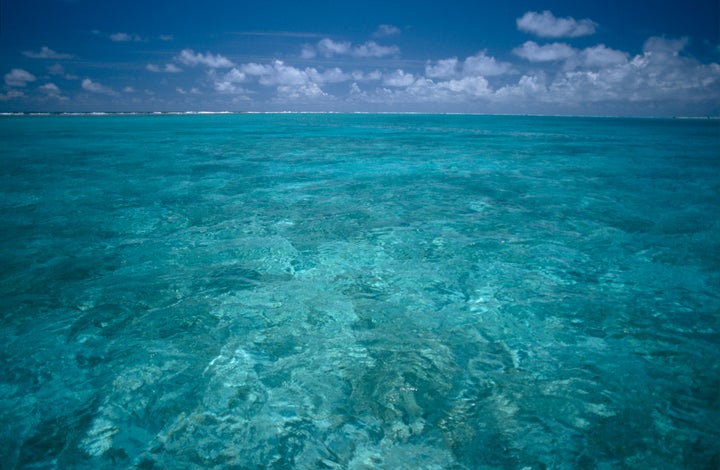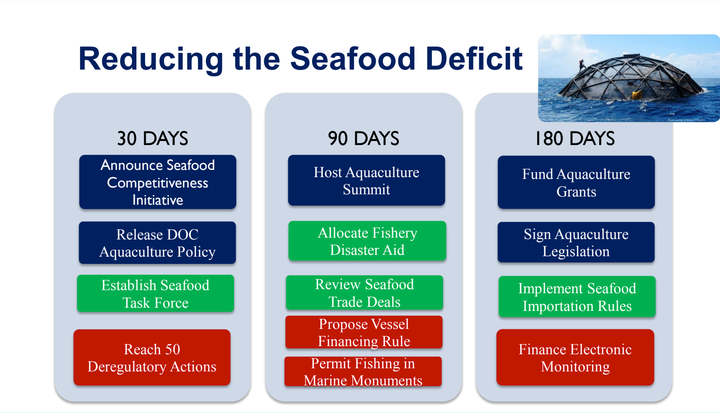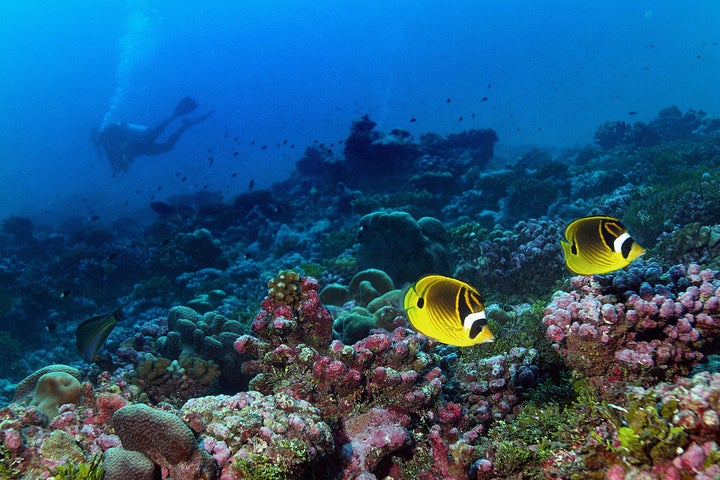
An internal document suggests the nation’s leading ocean science agency is planning to gut protections for America’s marine national monuments, opening millions of acres of federal water to commercial fishing as early as September.
Rear Adm. Timothy Gallaudet, acting administrator of the National Oceanic and Atmospheric Administration, detailed the proposed change in a presentation at the Department of Commerce’s “Vision Setting Summit” last month. The move, which is tied to the Trump administration’s monthslong review of national monuments, seeks to boost domestic seafood production.
But critics argue that opening these protected waters to fishing would do nothing to meet that goal. And they say it would be at odds with the primary purpose of designating a marine protected area: providing refuge for marine life.
The Washington Post reported last week that Gallaudet had called for stripping language about studying climate from NOAA’s mission statement. Not mentioned in the Post’s report, however, is that his presentation, reviewed by HuffPost on Thursday, also outlines the Commerce Department agency’s “Strategic Priorities for 2018,” including advancing maritime commerce and reducing America’s seafood trade deficit.
One of the ways NOAA intends to accomplish the latter is by approving “permit fishing in marine monuments” within 90 days, according to the document.

Last year, President Donald Trump signed a pair of executive orders threatening 27 American national monuments that together span more than 11 million acres of land and about 760 million acres of ocean.
One order tasked the Interior Department with reviewing all federal monuments 100,000 acres or larger that were established or expanded under the Antiquities Act after Jan. 1, 1996. The other instructed the Department of Commerce to review all marine sanctuaries and monuments designated or expanded within the last 10 years.
Trump has not taken any other action on marine monuments yet, but Gallaudet’s presentation provides additional evidence that the administration is eyeing significant changes to how these monuments are managed.
In a draft report submitted to the White House last August and leaked to the media the following month, Interior Secretary Ryan Zinke specifically recommended that Trump greenlight commercial fishing in three marine national monuments: Pacific Remote Islands, Rose Atoll, and Northeast Canyons and Seamounts. But in a final report submitted in December, Zinke made no mention of opening commercial fishing.
Instead, he called on Trump to amend the monuments’ proclamations, which currently prohibit commercial fishing altogether. Zinke recommended that fishery management authority be returned to the regional fishery councils, as the Magnuson-Stevens Fishery Conservation and Management Act authorizes. Passed in 1976, the Magnuson-Stevens Act is the primary law that governs marine fisheries management in federal waters, with the goal of preventing overfishing and conserving habitat.
Marine monuments not mentioned in Zinke’s final report are Papahānaumokuākea Marine National Monument surrounding the remote Northwestern Hawaiian Islands ― one of the largest marine protected areas on earth ― and Marianas Trench Marine National Monument.
Commerce Secretary Wilbur Ross submitted his own recommendations to Trump in October, but unlike Zinke’s, that report has not yet been made public. In his executive order, Trump tasked Ross with reviewing the “opportunity costs associated with potential energy and mineral exploration and production from the Outer Continental Shelf,” suggesting the administration is poised to open these sites to the extractive industry as well.

Reached for comment Thursday, NOAA spokeswoman Julie Roberts forwarded a statement to the media last week in which Gallaudet said the presentation is not “a final, vetted proposal,” but rather highlights some of the ways he thinks NOAA can augment its parent agency’s five-year strategic plan.
Asked specifically about the language regarding fishing in national monuments, Roberts noted that Zinke’s final recommendations to Trump included managing fisheries in some marine monuments under the Magnuson-Stevens Act.
“Successful implementation of this statute has been the key to the U.S. having the most sustainable wild-caught fisheries management in the world,” she said via email. Roberts did not respond to HuffPost’s questions about which marine sites would be affected.
Seth Horstmeyer, a program director at ocean conservation nonprofit Oceans 5, told HuffPost that allowing fishing in these areas would “fly in the face” of the original purpose of these sites, which is to protect resources and restore the health of the ocean, including fish stocks. He fears they could become monuments in name alone, or what he called “paper monuments.”
Horstmeyer also rejected the notion that the change would help resolve the seafood trade deficit, as fish species are managed on a quota-based system.
“Each year the Hawaii-based longline fishery is allocated a quota for how much bigeye tuna they can catch, so opening marine monuments will not allow more fish to be caught and certainly will not reduce the trade deficit,” he said.
More than 80 percent of the seafood consumed in the U.S. is imported.
At an event at the National Press Club in May, Ross said the seafood deficit “seems a little bit silly to me given the coastlines we have.” Solving that problem, he added, is a top priority.
